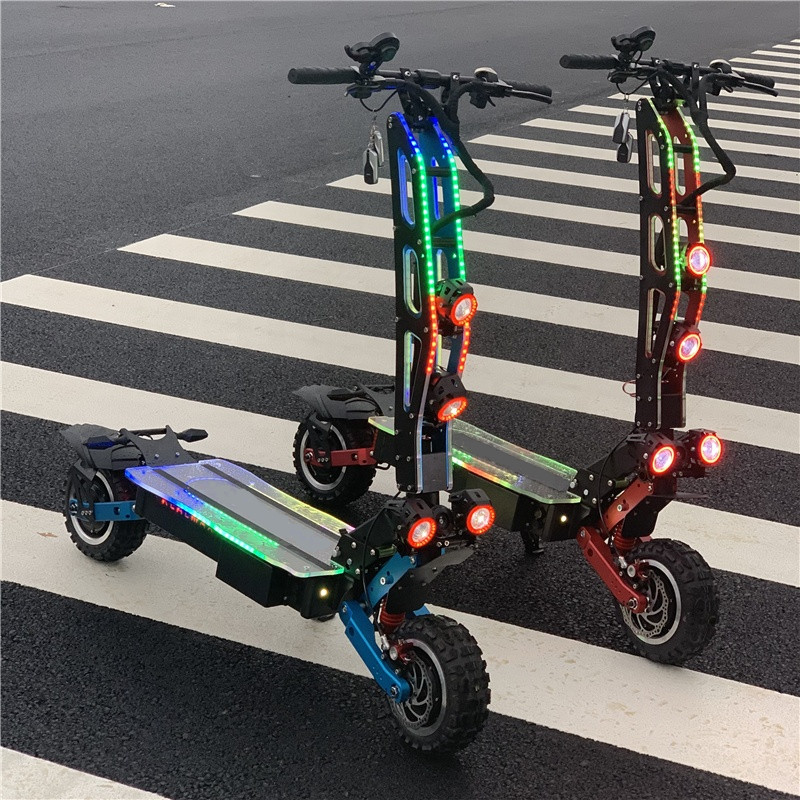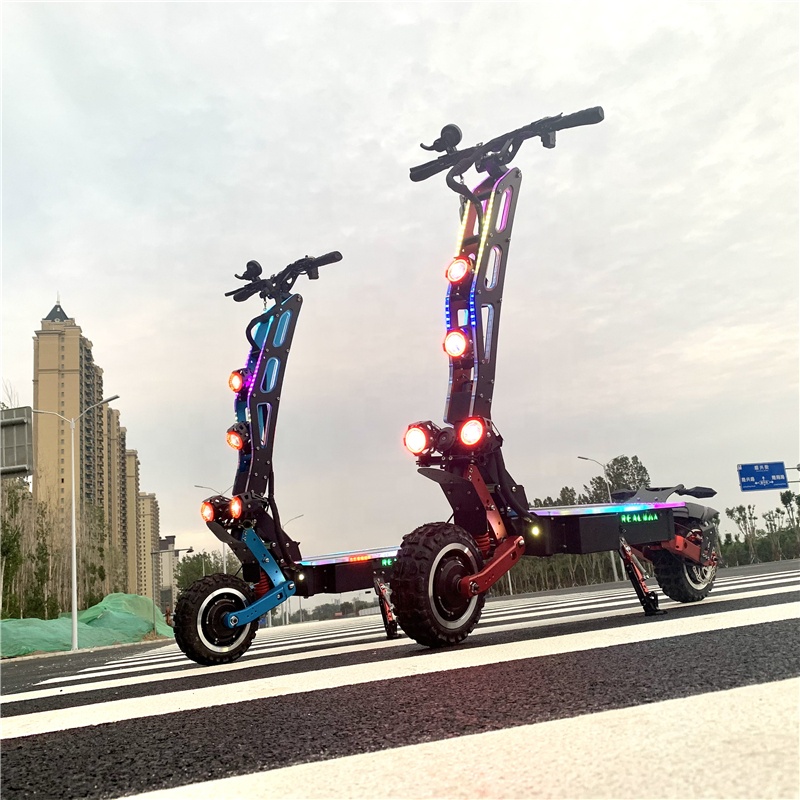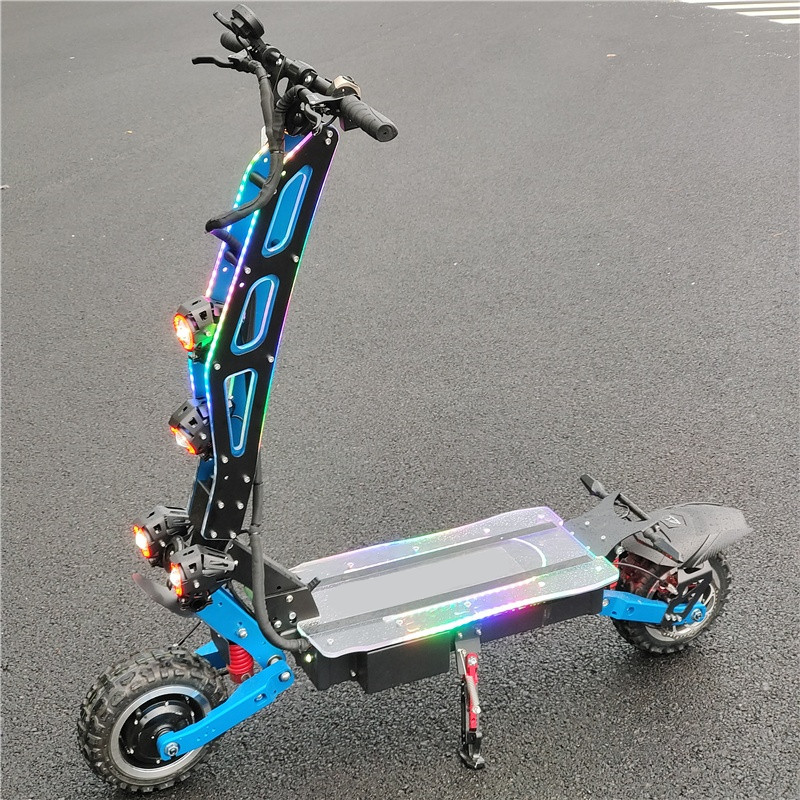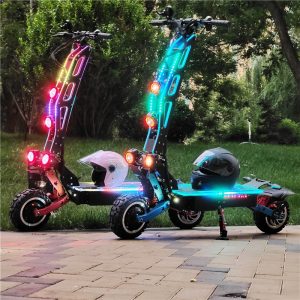Description
electric scooter 5000w
patinet
7000w scooter
| Parameter | |
| Frame | High strength aluminum alloy 6061, surface paint |
| Forking forks | One forming front fork and rear fork |
| Electric machinery | 11 “72V 10000W brushless toothed high speed motor |
| Controller | 72V 70SAH*2 tube vector sinusoidal brushless controller (mini type) |
| Battery | 72V 40AH-45AH module lithium battery (Tian energy 21700) |
| Meter | LCD speed, temperature, power display and fault display |
| GPS | Location and telecontrol alarm |
| Braking system | After one disc, does not contain harmful substance, in compliance with international environmental requirements |
| Brake handle | Forging brake of aluminum alloy with power breaking function |
| Tyre | ZhengXin tire 11 inch |
| Headlight | LED lenticular bright headlights and driving lights |
| Maximum speed | 110km |
| Extension mileage | 115-120km |
| Motor | 5000watt per piece |
| Wheel | 11inch |
| Net weight and gross weight | 54kg/63kg |
| Product size | L* w* h: 1300*560*1030 (mm) |
| Packaging size | L* w* h: 1330*320*780 (mm) |
The range of electric scooters is an important factor for consumers to consider when purchasing one. Electric scooters are battery-powered, and their range depends on various factors such as battery capacity, scooter design, and rider behavior.
In general, most electric scooters have a range of about 15 to 30 miles on a single charge. However, this range can vary depending on the specific model and manufacturer. Some high-end electric scooters can even reach ranges of up to 50 miles or more on a single charge.
The battery capacity is the most significant factor that determines the range of an electric scooter. Larger batteries have more energy storage capacity, allowing the scooter to travel further distances before it needs to be recharged. However, larger batteries also tend to be heavier and more expensive, which can affect the scooter’s performance and cost.
The scooter’s design can also affect its range. For example, scooters with more aerodynamic designs can travel further distances on a single charge than those with boxier designs. Additionally, some scooters have features that can improve their range, such as energy-saving modes or regenerative braking systems that capture energy during braking and store it in the battery.
Rider behavior can also influence the range of an electric scooter. Speeding, hauling heavy loads, or constantly using the scooter at full throttle can reduce its range. On the other hand, slower speeds, lighter loads, and more conservative use of the scooter can extend its range.
When purchasing an electric scooter, it’s important to consider your specific needs and usage patterns. If you need to travel long distances regularly, you may want to choose a model with a higher-capacity battery or even consider purchasing a second battery for longer ranges. On the other hand, if you mostly travel short distances and have easy access to charging stations, you may be able to get by with a lower-range scooter that is lighter and more affordable.
In addition to range, there are other factors to consider when purchasing an electric scooter, such as cost, performance, durability, and charging experience. It’s important to balance all these factors to find the perfect electric scooter for your needs and lifestyle.
Electric scooters have become increasingly popular in recent years as a convenient and environmentally friendly mode of transportation. With their range limitations, however, they are not suitable for all types of travel. For long distances or daily commuting, a car or public transportation may still be the more practical option. But for short trips around town or in between transit stops, electric scooters can provide a fun, fast, and sustainable way to get around.
As technology continues to improve and battery capacities increase, we can expect the ranges of electric scooters to improve as well. In the future, it may be possible to travel even further distances on a single charge, making electric scooters an even more attractive alternative to traditional modes of transportation.













Reviews
There are no reviews yet.